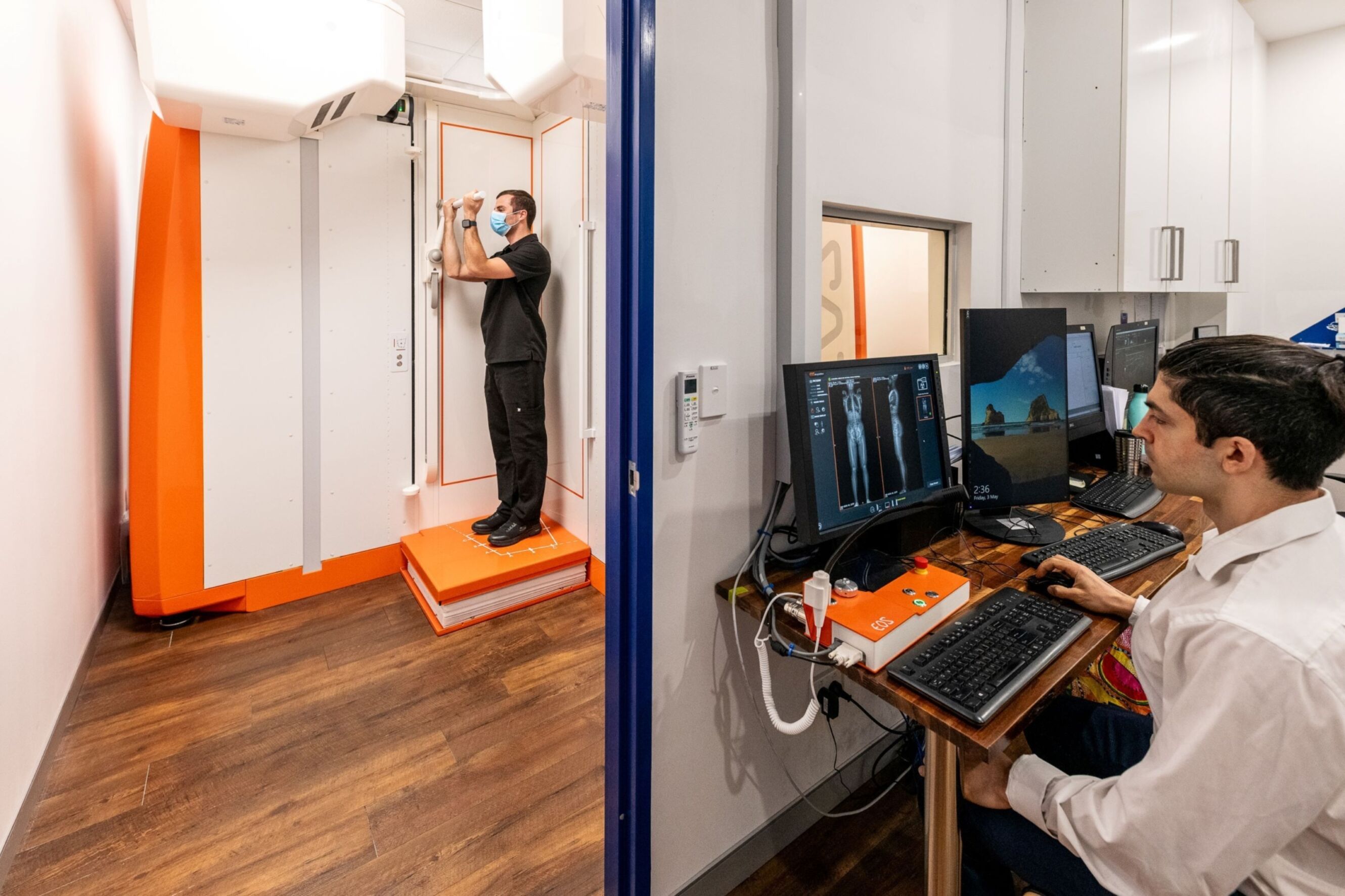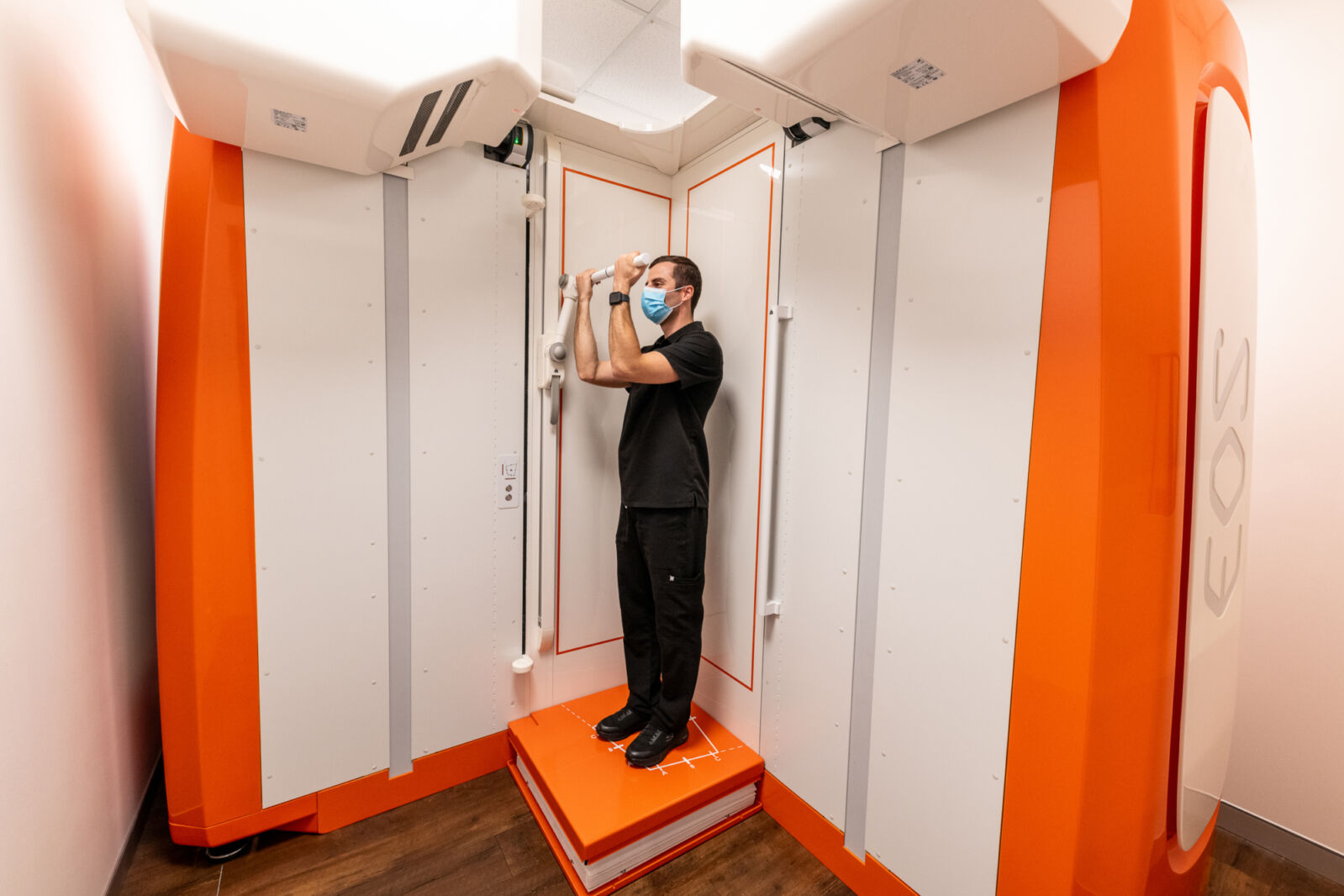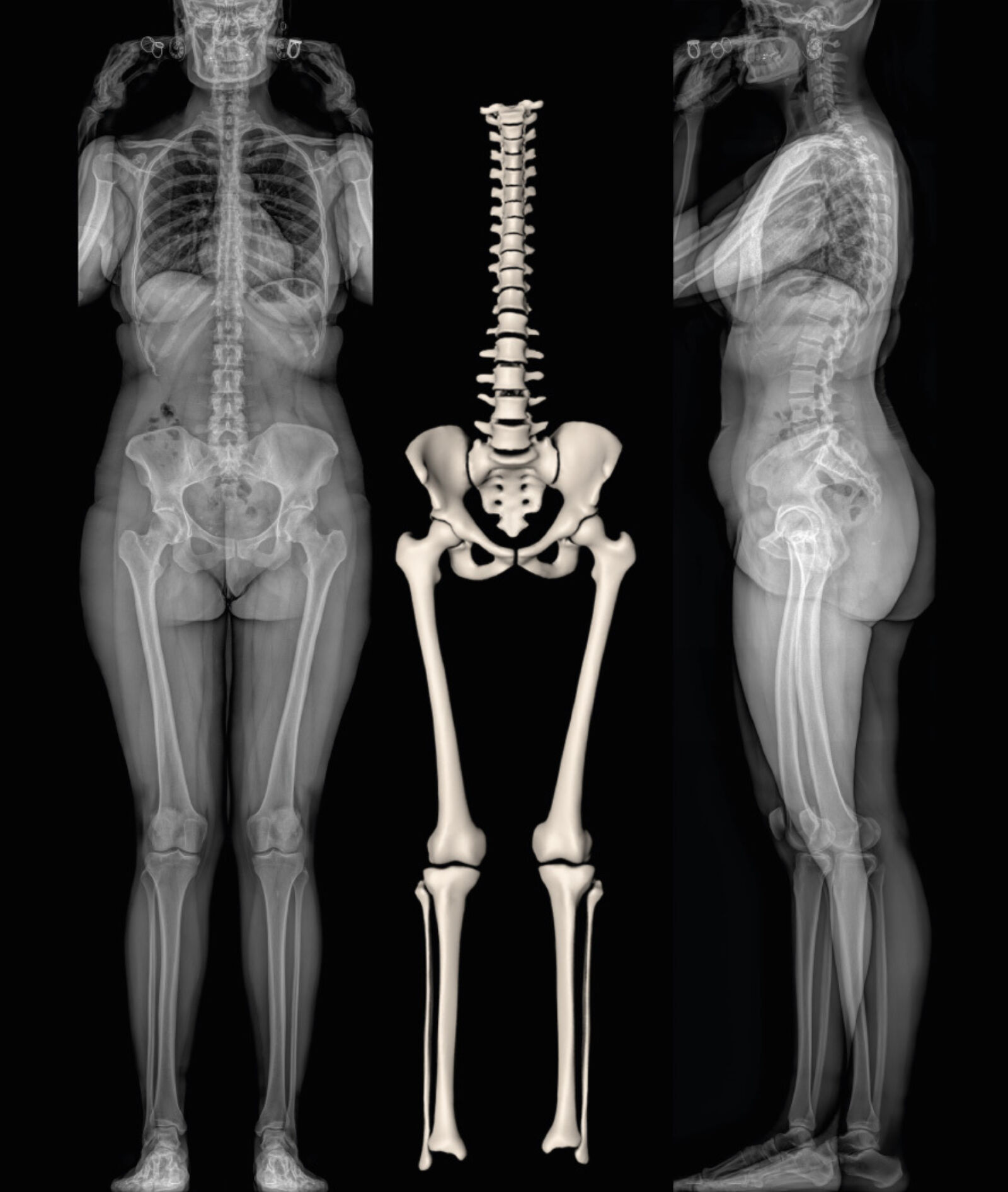
EOS Imaging Services
Harbour Radiology is proud to be the first imaging provider in South West Sydney to introduce the EOSedge Imaging System, a cutting-edge advancement in EOS Imaging Services. This ultra-low-dose, high-precision EOS Imaging system captures high-quality 2D and 3D images, providing exceptional detail while ensuring patient safety. Unlike conventional X-rays, EOS allows for full-body imaging in a natural standing position, offering more accurate diagnostic insights for musculoskeletal conditions, including spinal disorders, hip dysplasia, and lower limb alignment issues.

Our Unique EOS Imaging Service
Harbour Radiology is leading the way in EOS Imaging Services in Sydney. We are the first Radiology Clinic in South West Sydney to install the state-of-the-art EOSedge Imaging System. EOS imaging is designed for ultra-low-dose, high-precision diagnostics. EOS is an advanced system that captures 2D and 3D full-body images while patients remain in a natural position.
Unlike conventional X-ray technology, EOS Imaging delivers highly detailed images with significantly lower radiation exposure. EOS is ideal for ongoing monitoring of musculoskeletal conditions. EOS enhances diagnostic accuracy for spinal disorders, hip dysplasia, and lower limb alignment issues. EOS also provides better insights for personalised treatment plans.

EOS Common Uses
One of the most significant advantages of EOS Imaging Services is its ability to provide precise, weight-bearing imaging that offers a clearer, more functional view of the musculoskeletal system. Unlike traditional imaging, EOS generates personalised 3D bone models, delivering unmatched insights into joint interactions, lower limbs, the spine, and skeletal alignment.
The EOS advanced imaging technology plays a crucial role in diagnosing and planning treatments for a range of conditions, including:
Spinal deformities – such as scoliosis, kyphosis, and lordosis.
Bone and joint disorders – including hip dysplasia and knee alignment issues.
Orthopaedic surgery planning – for hip and knee replacements or spinal surgeries.
Paediatric musculoskeletal conditions – ensuring safer, more precise monitoring with reduced radiation exposure.
By providing a clearer, more accurate view of skeletal structures in a weight-bearing stance, EOS Imaging Services revolutionise how specialists assess and treat musculoskeletal conditions.
Frequently Asked Questions
How should I prepare for an EOS scan?
No special preparation is required for an EOS exam, but wear loose-fitting clothing without metal buckles, zips or fasteners . A gown may be provided if required for your convenience. If pregnant, inform your doctor and our staff when booking.
Bring a current referral, any relevant films, reports, and your Medicare or Department of Veterans Affairs card.
What will happen during my EOS appointment?
You will be asked to step inside the scanner and remain still. The scanner, gentle and non-intrusive, moves vertically from head to toe without touching you. With two perpendicular X-ray tubes and detectors, it captures front and side views simultaneously, producing high-resolution 2D and 3D images.
A skilled and experienced radiographer will perform the scan, ensuring proper positioning for accurate imaging. The entire process is quick, with the scan itself taking approximately 20 seconds. Unlike traditional X-rays, EOS imaging captures full-body images in a natural standing position, allowing for more precise assessments of posture, skeletal alignment, and joint interactions.
How long does an EOS scan take?
The setup for an EOS scan lasts around 5 minutes, during which the radiographer will guide you into the correct position to ensure accurate imaging. The scan itself is incredibly quick, taking approximately 20 seconds to capture high-quality 2D and 3D images simultaneously.
Since EOS Imaging captures full-body, weight-bearing images in a single scan, there’s no need for multiple exposures or repositioning, making the process faster and more efficient compared to traditional X-ray methods.
What are the risks of having an EOS scan?
This low-dose imaging system delivers radiation 9 times less than a standard X-ray and 20 times less than a computer tomography (CT) scan. This is beneficial for patients who require frequent imaging and for paediatric imaging, where minimising radiation exposure is crucial.
Although EOS Imaging involves a very small dose of radiation, it is not suitable for women who are pregnant or may be pregnant, as any level of radiation poses potential risks during pregnancy. However, for most patients, the benefits of EOS Imaging Services—such as enhanced diagnostic accuracy and reduced exposure—far outweigh the potential risks.
What happens after the EOS exam?
Your doctor will receive a detailed 3D model of your skeleton with precise measurements from head to toe. A radiologist will carefully interpret the scan and provide a comprehensive report to your referring doctor.
It is important to schedule a follow-up appointment to discuss your EOS results. The report will be sent directly to your referring doctor, ensuring they have the necessary information for any next steps in your treatment plan.
Your EOS Imaging scan images will be accessible via the patient portal, and reports are typically available within 5 days, allowing your doctor enough time to review the findings before your follow-up consultation. If you have any questions about your results, your doctor will be able to provide further guidance based on the detailed imaging and analysis.
Whats the cost of doing EOS exam?
EOS Imaging Services are bulk billed for all Medicare-eligible examinations. There is no out-of-pocket cost for patients who qualify under Medicare. We accept referrals from any medical provider, so you can access EOS Imaging with a valid referral from your GP, specialist, or other healthcare professional. If you are unsure about your eligibility, check with your doctor or contact our team for further information.